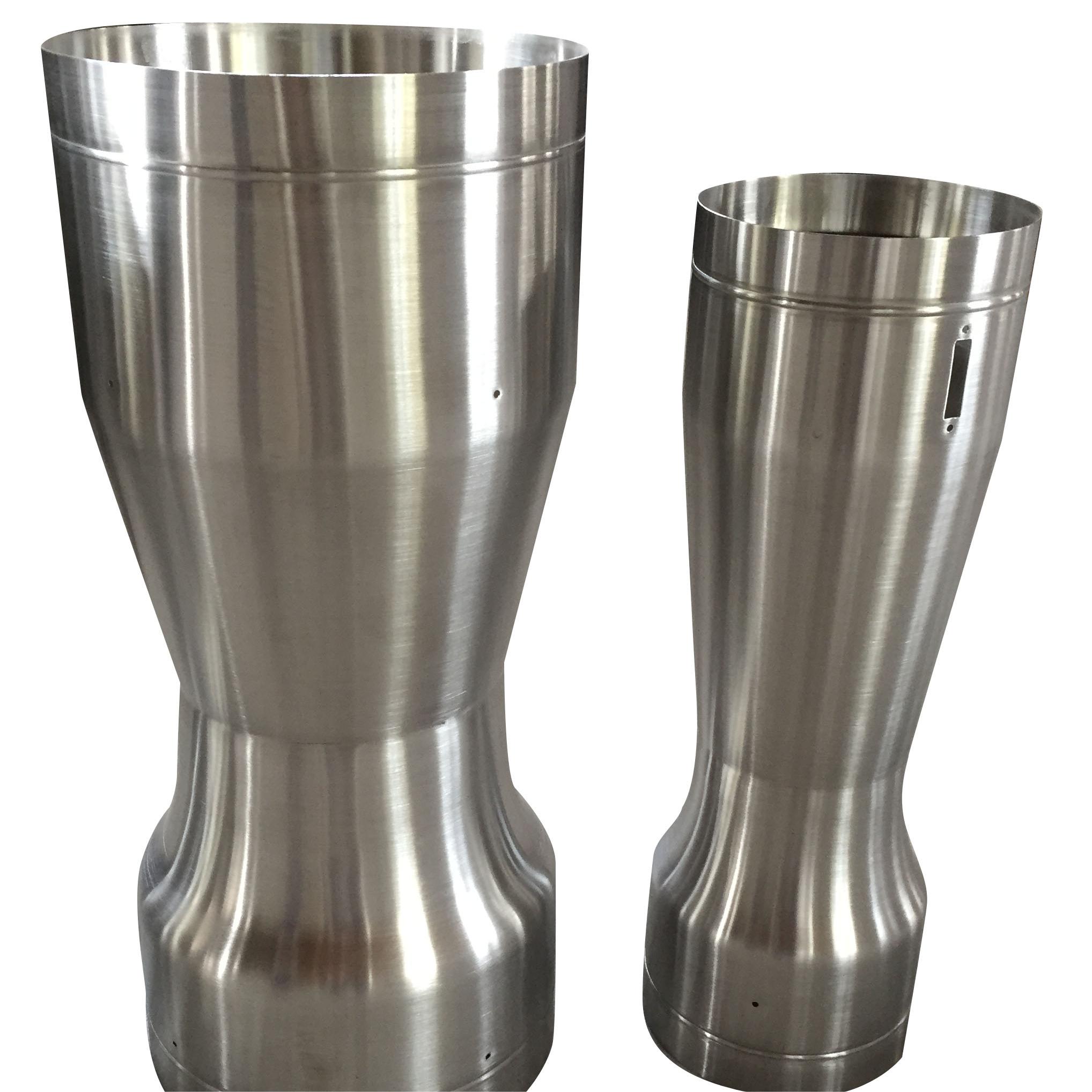
Stainless Steel Metal Spinning
Stainless steel metal spinning is a metal forming process used to form metal discs and tubes into axisymmetric parts and products. It has many unique advantages, one of which is the ability to spin uniformly from a variety of materials.
In the metalworking world, stainless steel has a reputation for its superior properties. Metal spinning is a versatile forming process used in a wide range of industries, and Altron has over 25 years of experience in metal spinning; due to its unique characteristics and compatibility with modern manufacturing techniques, it has become a serious player in the field of SUS metal spinning.

Properties and Selection of Stainless Steel Materials
One of the most commonly used materials in metal spinning operations is stainless steel, specifically the 300 and 400 series. Its strength and corrosion resistance make it an ideal material choice for a wide range of applications and industries. Additionally, both the 300 series and 400 series demonstrate unique characteristics that make them suitable for metal spinning projects.
Material Specifications
Stainless steels are iron-based alloys with a minimum chromium content of 10.5%. This high chromium content allows for the formation of a passive chromium oxide layer on the material, which leads to superior corrosion resistance among all stainless steels.
The exact breakdown of alloying elements in a particular type of stainless steel provides the material with specific structural characteristics. For example:
Stainless Steel 300 Series
300 series products are the most commonly used of the stainless steel family. They are generally made from chromium, nickel, and molybdenum. In addition to excellent corrosion resistance, key characteristics of these materials include:
- An austenitic crystalline inherent structure (non-magnetic)
- Extensive machinability
- Broad finishing options
- Good high-temperature stability
- Resistance to cracking, etching, and scratching
- Simple maintenance requirements
They are used in many industrial and commercial applications, including those in the aerospace, automotive, and construction industries.
Stainless Steel 400 Series
400 series products typically contain chromium and manganese. While they do demonstrate the level of corrosion resistance that is typical of stainless steels in general, they are less resistant to corrosion than 300 series products. As a result, they typically cost less. Other key characteristics of these materials include:
- A martensitic crystalline structure (magnetic)
- Non-hardenable by heat treating
- Strength greater than carbon steel
- Resistance to scaling at elevated temperatures
- Good surface finishing options
- Suitability for applications where thinner materials/reduced weight are needed
Material Advantages
In general, stainless steels are known for the following benefits:
- Resistance to heat and corrosion
- Ease of fabrication
- Excellent strength-to-weight ratio
- Cost-effectiveness
However, different stainless steels also have unique advantages that make them suitable for particular applications. For example:
Stainless steel 300 Series materials can offer:
- Oxidation resistance in temperatures up to 2100° F
- Carburization and nitriding resistance
- Thermal shock resistance
- Strength retention in high temperatures
- Chloride ion stress corrosion cracking resistance
- High creep strength
Stainless steel 400 Series materials can offer:
- Heat treatability to a broad range of hardness and strength level
- Easy machinability
- Good ductility
Important Factors in Stainless Steel Metal Spinning
Precision and efficiency are paramount in stainless steel CNC metal spinning. Key factors influencing the process include material thickness, tooling design, lubrication, and spindle speed. Achieving optimal results necessitates meticulous attention to these variables to ensure dimensional accuracy and surface integrity.
Stainless Steel Metal Spinning Process Technology
Stainless steel CNC metal spin forming encompasses a sequence of steps designed to shape raw material into desired forms. Beginning with blank preparation, the process involves mounting the workpiece onto a spinning lathe and forming it using specialized tools. Control over parameters like pressure and velocity dictates the final outcome, demanding expertise and precision.
Application Areas of Stainless Steel Metal Spinning
The versatility of stainless steel metal spinning renders it indispensable across diverse industries. From aerospace and automotive sectors to household appliances and architectural components, stainless steel spun parts find applications in myriad products. Their inherent durability, corrosion resistance, and aesthetic appeal make them preferred choices in demanding environments.
Stainless Steel CNC Metal Spinning Case


















Trends in Stainless Steel CNC Metal Spinning
Advancements in material science and manufacturing technologies continually reshape the landscape of stainless steel CNC metal spin forming. Enhanced automation, digital simulation, and adaptive control systems are revolutionizing production efficiency and product quality. Furthermore, the integration of additive manufacturing techniques opens new avenues for complex geometries and customized solutions.
Altron’s integration into SUS metal spinning amplifies the potential for innovation and excellence in manufacturing. Leveraging its unique properties alongside advancements in process technology, the industry can unlock new possibilities in product design, performance, and sustainability. As stainless steel continues to reign supreme in metalworking, Altron emerges as a catalyst for transformative developments, shaping the future of modern engineering.
Altron Summary Stainless Steel Metal Spinning
Altron’s integration into stainless steel metal spinning amplifies the potential for innovation and excellence in manufacturing. Leveraging its unique properties alongside advancements in process technology, the industry can unlock new possibilities in product design, performance, and sustainability. As stainless steel continues to reign supreme in metalworking, Altron emerges as a catalyst for transformative developments, shaping the future of modern engineering.




